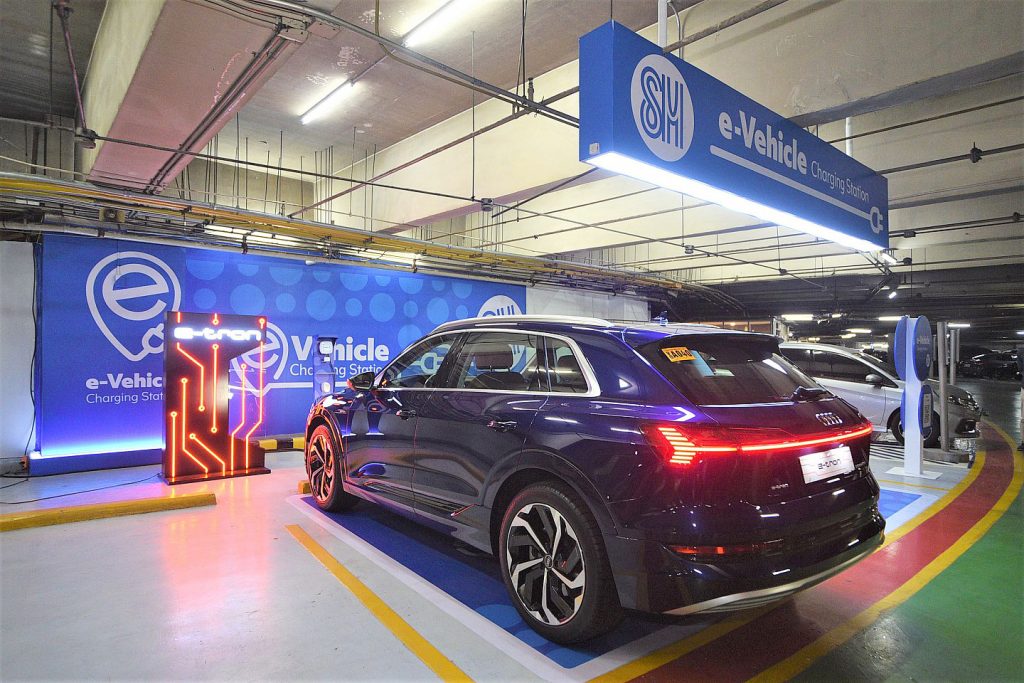I have long wanted to own my own electric vehicle (EV). But, as we can see in the open markets, four-wheeled EVs are just too expensive. Even if I planned to just convert my 25-year-old gasoline-powered sedan into a full EV, my reliable sources estimate that the process would still set me back up to P1.5 million. The battery alone would cost me upwards of P300,000.
Given my current salary grade, I had to scrap my plan. Instead, I’ve converted my old mountain bike into an e-bike. The mountain bike itself cost me no more than P15,000. The lithium-ion battery with enough juice to run for 50 kms on a single charge (on pure throttle power) cost around P25,000, then the mid-hub electric motor and controller cost P44,000. Overall, my converted e-bike costs around P84,000, and I can combine my pedal power with assistance from the electric motor to extend the 50-km range to whatever distance my legs can carry me.
Recently, I decided to convert my e-bike yet again—this time from two wheels to three (two wheels at the front). It’s currently in the shop, and the additional modification will cost me another P20,000. But when I get to use it again, it will be safer to use, especially on streets with high motor and pedestrian traffic.
Spending around P100,000 on an EV is just about as much as I can afford. I know, my soon-to-be e-trike is no comparison to the million-peso 4-wheeled EVs manufactured by world-renowned brands. But, essentially, my e-trike and that EV sedan serves the same purpose—to take me from point A to B as cost-effectively as possible while emitting zero climate change-inducing greenhouse gases.
There is that big price gap between the neighborhood fully assembled e-trike (which we see lots of nowadays) that costs roughly the same as my own converted e-trike and these 7-figure EVs. Where are the sub-million 4-wheeled EVs that are already quite ubiquitous in other countries (especially in China)?
That’s what the landmark Evida (Electric Vehicle Industry Development Act) or Republic Act 11697 is supposed to address, right? To bring down EV prices drastically so that these vehicles become more mainstream, while developing our own local EV manufacturing capacities.
I asked Ferdinand Raquelsantos of the Electric Vehicle Association of the Philippines (Evap) how much Evida would impact prices of imported EVs, and he estimated that a P1.5-million EV imposed with zero tariff would have its price reduced by P300,000. Though P1.2 million would still make potential buyers think twice, that’s still a substantial price drop and would already seal the deal for some buyers.
Clearly, slashing tariffs alone wouldn’t be enough to stomp prices of global EV brands below the psychological million-peso barrier. A lot of factors need to be at play, from both local and global industries. And I’m hoping Evida can align them all to our working class commuters’ advantage.
It’s a long road ahead. Right now, just for the topic of tariffs, there are already some contentious issues brought up by opposing sides.
Evap president Edmund Araga sent a letter to the Tariff Commission last May 16, suggesting that the initiative to remove tariffs be limited to plug-in hybrid electric vehicles (PHEVs) and full electric vehicles (EVs or battery electric vehicles/BEVs) and exclude hybrid electric vehicles (HEVs).
The Evap letter said that removing tariffs from EVs “would greatly help in boosting EV adoption in the country and create the mass needed to facilitate investments on charging networks and also hopefully eventually attract investors on their manufacturing locally.”
However, Evap recommended that the removal of tariffs “be limited to PHEVs and full EVs and exclude hybrid electric vehicles (HEVs) for the following reasons: HEVs are actually internal combustion engine (ICE) or conventional vehicles in the sense that they source their power solely from petroleum and charging is done via its internal combustion engine; they don’t contribute in diversifying energy sources in the country which is one of the main intentions of Evida; they are not classified as zero emission vehicles (ZEVs) unlike PHEVs, thus are treated differently; the higher cost of electrified units are mostly traced to their batteries. Unlike PHEVs and EVs, batteries of HEVs are smaller, thus they are cheaper and already approach the cost of pure ICE vehicles;
“Providing similar incentives to HEVs will lead to significantly lower prices than PHEVs and EVs and eat up the market and slow down the adoption of PHEVs and EVs which would be detrimental to the whole intention of the initiative. It is important to provide an upper hand to PHEVs and EVs relative to HEVs.”
The letter goes on to explain: “It is common for countries now to provide incentives only to PHEVs and EVs and exclude HEVs, as they are often considered as conventional vehicles and are already mostly competitive price wise; and HEVs have been included already under the TRAIN law excise tax incentives (50 percent) despite being conventional vehicles.”
The Evap letter also includes the following proposals:
•The exclusion of imported completely built up (Completely Builtup Units) electric jeepneys and electric tricycles in the tariff exemption initiatives so as not to affect the development and growth of the local e-Jeepney and e-Tricycle industry.
•The provision of new tariff codes for some items instead of lumping them in existing codes to avoid confusion in implementation. This would apply to key electrical components of EVs, including battery cells, packs and modules, traction motors and motor controllers.
On the other hand, there’s Vitaliano Frias Mamawal of the automotive technical division of the Philippine Society of Mechanical Engineers, who said he had read the definition of terms of RA 11697 and cited that, in the Evida, the term “EV” refers to a vehicle “with at least one electric drive for vehicle propulsion. For purposes of this Act, it includes BEV, HEV, light electric vehicles and a plug-in hybrid EV.”
Mamawal said, “Evap may be (contradicting) a new law which seeks to develop its industry by pushing out HEVs and PHEVs. Also, HEVs are the logical step to adapt EVs, as it does not require charging infrastructure, which may take some years to create.”
Mamawal cited the EV situation in the United States, which he said had about 40,000 charging stations by 2019 but were still not enough to serve its EVs.
“The Philippines still has a long way to go,” Mamawal observed. The last time I checked, the list of charging stations in the Philippines is 58 for AC chargers, 9 for DC chargers and six for swapping stations. This does not yet include charging stations initiated by luxury carmakers in their chosen locations and in malls.
Mamawal further stated that in Chapter IV, Section 24 on fiscal incentives in Evida, “a 30-percent discount for BEV and 15-percent for HEV from payment of motor vehicle user’s charge imposed by the LTO under RA 8794… (it) is very explicit the HEV is included in Evida.”
Yossapong Laoonual, honorary chairman of the Electric Vehicle Association of Thailand, revealed to me that in his country: “The incentive for HEVs belongs in an old BOI (Board of Investments) program since 2017 that excises tax of HEVs/PHEVs with local battery assembly reduced (to) 4 percent until 2025.” He added that the new incentives apply only to BEVs. Thailand’s new incentives for BEVs stipulate 0-percent import tax, 2-percent excise tax and 150,000-Baht user subsidy for electric passenger cars.
The Tariff Commission will be weighing a lot of arguments and counter-arguments in its formulation of inclusions and exemptions among EVs/BEVs, PHEVs, and HEVs. I’m just hoping that the outcome is in favor of the majority of the Filipino commuting public, as well as our environment. What good is the electrification of transport if only a few well-to-do individuals can afford it? What good is the law if it’s not sustainable from both an environment and business standpoint? Radical change is never easy, indeed.
For the meantime, I look forward to enjoying my trips while improving my cardio with my affordable customized e-trike.











